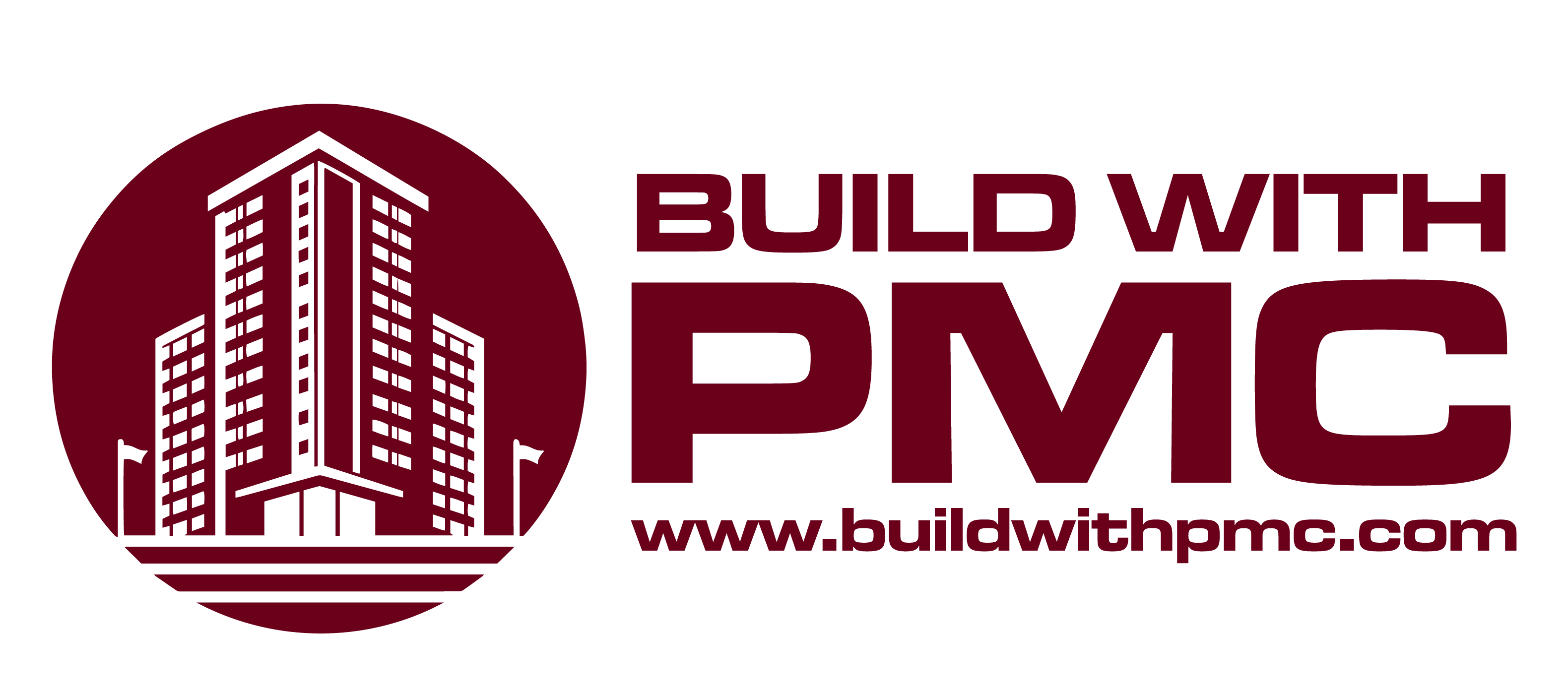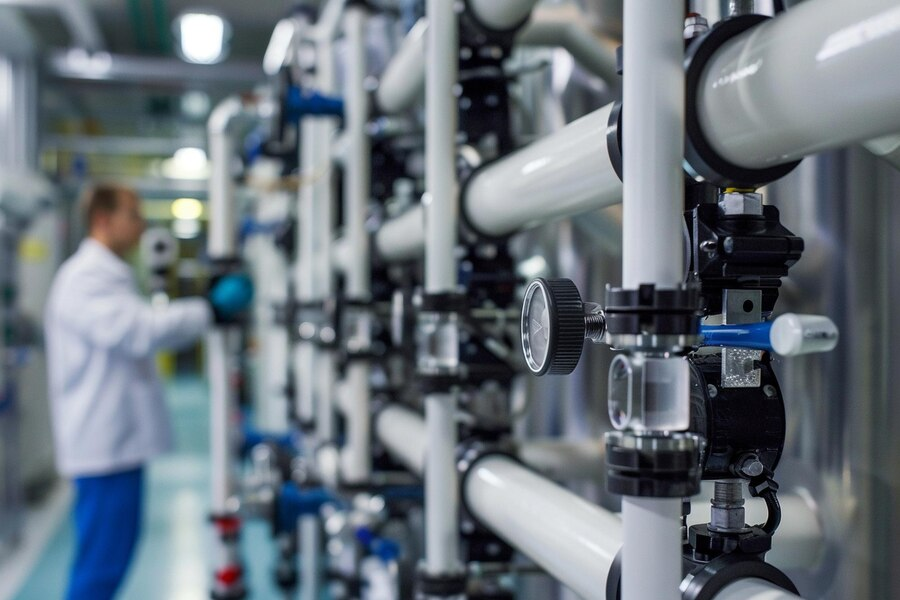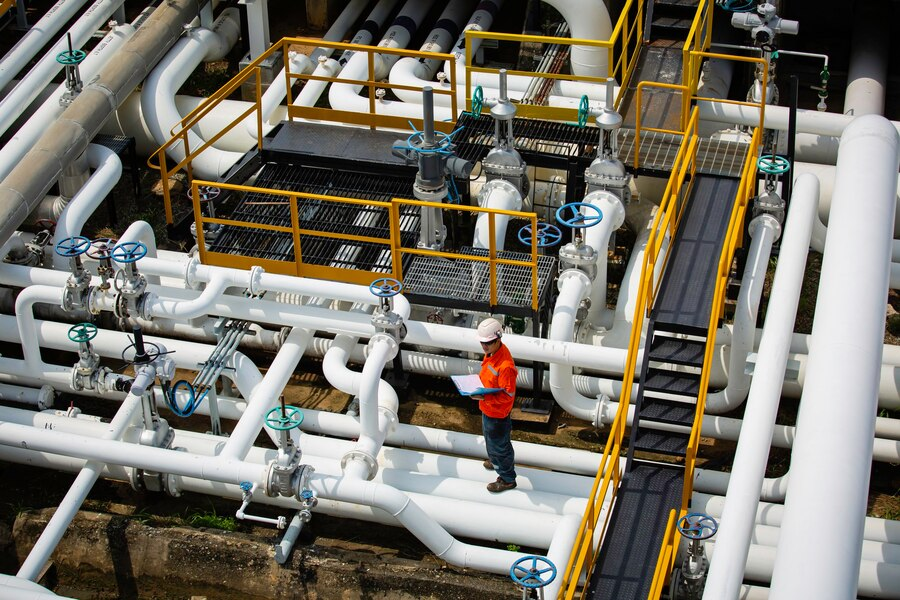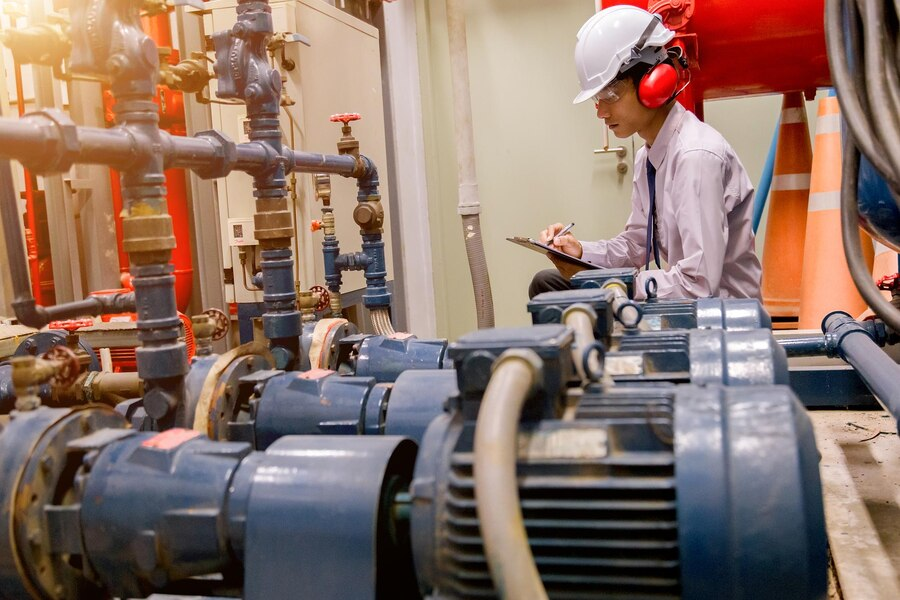Process piping is an unsung hero in many industrial operations, silently ensuring that everything runs smoothly. From transporting chemicals to controlling fluids and gases, process piping is integral to many industries, including oil and gas, pharmaceuticals, and manufacturing. But its role extends beyond mere transportation; it’s crucial for maintaining safety and compliance with regulatory standards. In this blog, we’ll explore the vital functions of process piping, its impact on safety, and how it contributes to regulatory compliance.
Understanding Process Piping
At its core, process piping refers to the network of pipes and associated components used to transport fluids, gases, and chemicals within industrial settings. This includes not just the pipes themselves but also valves, fittings, supports, and other accessories. Each component is designed to handle specific types of materials and conditions, ensuring efficient and safe operation.
The design and maintenance of process piping systems are guided by various standards and codes, which dictate everything from material selection to installation practices. These guidelines are essential for ensuring that the system functions correctly and safely.
The Importance of Safety in Process Piping
Safety is paramount in any industrial operation, and process piping plays a central role in achieving it. Here’s how:
Preventing Leaks and Spills
One of the primary concerns with process piping is preventing leaks and spills. Leaks can result in hazardous material release, posing risks to both human health and the environment. Proper design, regular maintenance, and using high-quality materials are crucial for minimizing the risk of leaks.
Avoiding Pressure Failures
Pipes in process systems often operate under high pressure. If a pipe fails due to pressure overload, it can lead to catastrophic accidents. To prevent this, pipes must be designed to handle the maximum pressure they will encounter. This involves selecting appropriate materials and ensuring that pressure relief valves and other safety mechanisms are in place.
Minimizing Corrosion and Erosion
Corrosion and erosion are common issues in process piping systems. Corrosion occurs when pipes react with the fluids they carry, leading to deterioration. Erosion happens when the flow of materials wears down the pipe. Both can weaken the piping and increase the risk of leaks or failures. Regular inspection and maintenance, along with using corrosion-resistant materials, help manage these issues.
Ensuring Proper Insulation and Heat Management
In some industries, process piping carries fluids at extreme temperatures. Proper insulation is necessary to maintain the desired temperature and protect workers from heat-related injuries. Additionally, managing heat effectively prevents issues like thermal expansion, which can cause pipe deformation or damage.

Designing for Safety and Compliance
Designing a process piping system involves more than just laying out pipes. It requires careful consideration of safety and compliance factors:
- Material Selection: Choosing the right materials is crucial for both safety and compliance. The materials used in process piping must be compatible with the fluids and gases they will carry. They should also be resistant to corrosion, erosion, and other forms of wear. Material selection should follow industry standards and codes to ensure reliability and safety.
- Design Considerations: The design of a process piping system must account for factors such as pressure, temperature, flow rate, and environmental conditions. It should also include features like valves, supports, and insulation. Following design standards and best practices helps ensure that the system will function correctly and safely.
- Installation Practices: Proper installation is essential for maintaining safety and compliance. This includes following construction standards, using correct techniques, and ensuring that all components are installed correctly. Regular inspections during installation can help identify and address potential issues before they become problems.
- Testing and Inspection: Testing and inspection are critical for verifying that a process piping system meets safety and compliance requirements. This can include pressure testing, visual inspections, and non-destructive testing methods. Regular inspections throughout the system’s life help detect and address issues before they lead to failures or accidents.
Key Factors in Process Piping for Safe and Compliant Operations
Several key factors contribute to the safety and compliance of process piping systems in industrial operations. First, the selection of appropriate materials is crucial. Pipes and components must be compatible with the substances they will transport and capable of withstanding the operational pressures and temperatures. Adhering to industry standards such as ASME B31.3 ensures that materials are tested for strength and durability, reducing the risk of failures and leaks.
Another essential factor is proper installation and regular maintenance. Installation must follow specific guidelines to ensure that pipes are secured, aligned, and supported correctly. Routine maintenance, including inspections and timely repairs, is necessary to identify and address issues like corrosion or wear before they lead to significant problems. This proactive approach helps maintain system integrity and compliance with safety regulations.
How Effective Process Piping Contributes to Regulatory Compliance
Effective process piping is crucial for meeting regulatory compliance in industrial operations. Properly designed and maintained piping systems adhere to industry standards and codes, such as ASME B31.3 and API guidelines, which specify requirements for materials, construction, and testing. Compliance with these regulations ensures that the system can safely handle the pressures, temperatures, and corrosive materials it will encounter, thereby minimizing risks of failure and environmental harm.
Beyond design, ongoing maintenance and inspections are essential for sustaining compliance. Regular checks for leaks, corrosion, and wear, along with timely repairs, help maintain the system’s integrity. Keeping detailed records of maintenance activities not only supports regulatory audits but also ensures that the piping system continues to meet safety standards over its operational life.
The Impact of Process Piping on Industrial Safety Regulations
Process piping significantly influences industrial safety regulations by establishing the standards for handling fluids and gases within various industries. Proper installation and maintenance of piping systems are critical for preventing accidents, such as leaks or explosions, which can have severe consequences for both personnel and the environment. By following safety regulations like OSHA guidelines and industry-specific codes, companies can mitigate risks associated with process piping.
In addition, process piping impacts safety regulations through its role in ensuring system reliability. Well-designed and maintained piping systems support regulatory compliance by adhering to safety standards and reducing the likelihood of incidents. Regular inspections and updates in line with evolving regulations help industries remain compliant and uphold high safety standards, protecting both workers and operations.
Why Process Piping is Essential for Compliance in Industrial Settings
Process piping is essential for compliance in industrial settings because it forms the backbone of fluid and gas transport within various operations. Compliance with industry standards such as ISO and API ensures that the piping system is constructed from appropriate materials and designed to handle the intended pressures and temperatures. This adherence helps prevent safety hazards and operational disruptions, which are critical for meeting regulatory requirements.
Moreover, maintaining compliance involves regular monitoring and maintenance of the process piping system. Regular inspections and adherence to maintenance schedules ensure that any wear or damage is promptly addressed, minimizing risks and ensuring continued compliance with safety regulations. This proactive approach not only helps meet legal requirements but also enhances overall operational efficiency and safety.
Managing Safety Risks with Effective Process Piping Systems
Managing safety risks in industrial operations hinges on the effectiveness of process piping systems. Properly designed and maintained piping systems help prevent leaks, spills, and other hazards by ensuring that pipes are suitable for the materials they transport and capable of withstanding operational pressures. Adhering to established safety standards and codes, such as ASME B31.3, is essential for reducing risks associated with process piping.
Effective management also involves regular inspections and predictive maintenance to identify potential issues before they escalate. Implementing these practices helps mitigate risks associated with pipe failure or degradation. By staying vigilant and proactive, companies can maintain a safe working environment and ensure that their process piping systems continue to operate within safety and regulatory guidelines.
The Intersection of Process Piping and Industry Safety Standards
The intersection of process piping and industry safety standards is pivotal for ensuring safe and compliant industrial operations. Process piping systems must be designed, installed, and maintained in accordance with safety regulations and industry standards to prevent accidents and ensure operational efficiency. Compliance with codes such as API and ISO ensures that piping systems are built to handle specific materials and conditions safely.
Furthermore, the continuous alignment of process piping practices with evolving safety standards is crucial. Regular updates to piping systems, based on the latest regulatory guidelines, help address new safety challenges and technological advancements. This ongoing compliance ensures that industrial operations remain safe, efficient, and within legal requirements, ultimately protecting both personnel and the environment.
Conclusion
Understanding the role of process piping in safety and compliance is crucial for maintaining effective and secure industrial operations. By focusing on proper design, material selection, and ongoing maintenance, businesses can significantly reduce risks and ensure their systems meet regulatory standards. Keeping up with industry regulations and adopting best practices helps prevent costly failures and safeguards both workers and the environment.
At PMC INC, we’re dedicated to helping you achieve and maintain the highest safety and compliance standards for your process piping systems. If you have any questions or need expert assistance with your piping needs, don’t hesitate to reach out. Contact us today at 562-905-3101 or visit us at 14563 Manzanita Dr, Fontana, CA 92335. We’re here to support you in creating safe and compliant operations.




